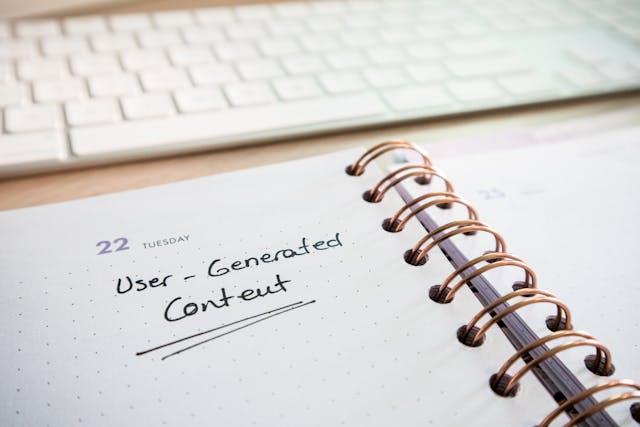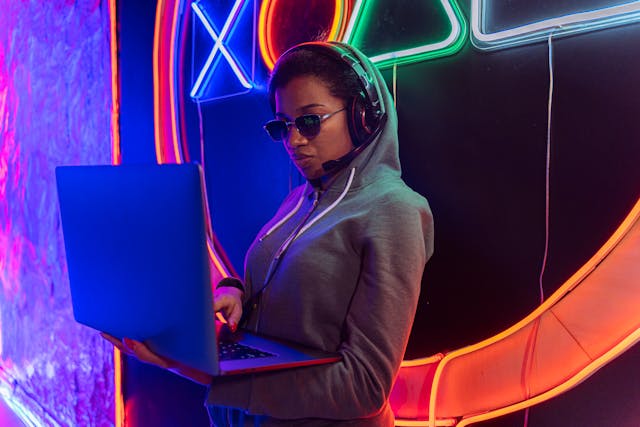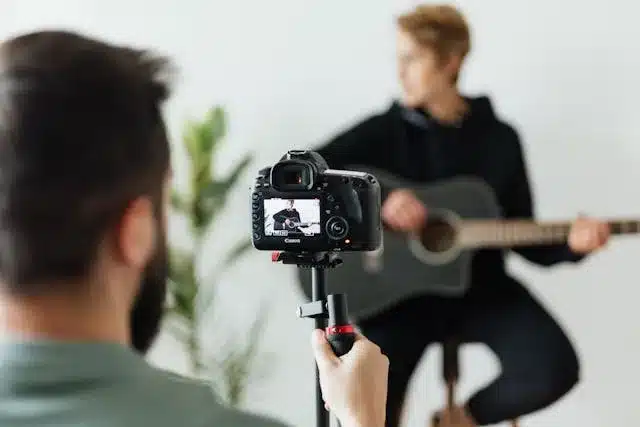Understanding Creative Commons (CC) licenses for artists has become very essential. Notably, these licenses allow you to share your work, while ensuring that your rights remain protected.
As an artist, you want your work to reach as many people as possible. At the same time, you also need to maintain control over how others use it.
Due to this, I would aid you with a comprehensive guide to Creative Commons licenses.
Furthermore, I’ll explain how they function, the different types available, and the ways they help artists distribute their work while retaining control.
What Are Creative Commons Licenses?
Creative Commons (CC) licenses offer a set of public copyright licenses that simplify content sharing.
Instead of restricting access entirely…
They allow creators to grant specific permissions while keeping their copyright intact.
Traditional copyright follows an…
“all rights reserved” approach.
However, CC licenses take a…
“some rights reserved” approach.
Moreover, they give creators flexibility by allowing others to share, use, and build upon their work under certain conditions.
Additionally, Creative Commons licenses work alongside copyright law. But not as a replacement. They provide a structured way for artists to specify how others may use their work.
At the same time, they ensure that creators maintain legal protection over their intellectual property.
For Example
A photographer might want to allow their landscape shots to be used on blogs, but not altered or used commercially.
A Creative Commons license makes this possible with clear conditions.
Why Use a Creative Commons License?
Artists choose Creative Commons licenses for several reasons. These licenses offer multiple benefits that help creatives expand their reach while maintaining control over their work.
With that said…
Below are the benefits of Creative Commons License for artists:
Increased Visibility
CC licenses often encourage widespread sharing, which leads to greater exposure. As a result of this, more people can discover and appreciate your work.
Platforms like SoundCloud, Flickr, and Wikimedia Commons highlight CC-licensed works, giving creators additional reach they might not achieve through traditional copyright.
Simplified Permissions
Instead of handling individual permission requests, you can use a CC license to define how others may use your content. Evidently, this removes the need for constant negotiation.
Community Building
CC licenses foster a culture of collaboration. Hence, when you share your work, others can remix or adapt it. And this could help create a community around your artistic contributions.
I once released a digital illustration under a CC BY-SA license. After seeing other artists remix it into music covers and motion graphics, it became an eye-opener, because it connected me to a niche creative network I didn’t know existed.
Control Over Your Work
Even when allowing others to use your work, you can still set conditions. Remarkably, with a CC license, you dictate the terms. And also, this would ensure that your content still aligns with your values.
Types of Creative Commons Licenses
Creative Commons offers six main licenses, and each of them grants different levels of permission and control. With that said…
These licenses combine four key elements, which are:
Attribution (BY): Requires credit to the creator.
ShareAlike (SA): Requires derivatives to use the same license.
NonCommercial (NC): Prohibits commercial use.
NoDerivatives (ND): Prohibits modifications.
Without wasting much time, let’s explore each license type.
1. Attribution (CC BY): This license offers the most freedom. It allows anyone to distribute, remix, adapt, and build upon your work, even for commercial purposes. However, they must credit you.
BY: Credit must be given to the creator.
2. Attribution-ShareAlike (CC BY-SA): This license permits adaptations and commercial use as long as users credit you and apply the same license to their new work.
BY: Credit must be given to the creator.
SA: Adaptations must use the same CC BY-SA license.
Wikipedia content uses CC BY-SA, which is why it can be adapted freely for educational or community projects.
3. Attribution-NonCommercial (CC BY-NC): This license lets others remix, tweak, and build upon your work for non-commercial purposes. Although they must credit you. But they do not need to apply the same license to their derivative work.
BY: Credit must be given to the creator.
NC: Use for commercial purposes is prohibited.
4. Attribution-NonCommercial-ShareAlike (CC BY-NC-SA): This license allows non-commercial modifications as long as the creator receives credit. Additionally, new creations must carry the same license.
BY: Credit must be given to the creator.
NC: Use for commercial purposes is prohibited.
SA: Adaptations must use the same CC BY-NC-SA license.
5. Attribution-NonCommercial-NoDerivatives (CC BY-NC-ND): This license strictly limits how others can use your work. They may share it, but only if they credit you, keep it unchanged, and avoid commercial use.
BY: Credit must be given to the creator.
NC: Use for commercial purposes is prohibited.
ND: No modifications are allowed.
6. Attribution-NoDerivatives (CC BY-ND): This license allows distribution in its original form, even for commercial purposes. However, users may not alter or remix the work.
BY: Credit must be given to the creator.
ND: No modifications are allowed.
How to Choose the Right License
First of all, you should know that, selecting a Creative Commons license depends on your goals. Also, it lies in how you want your work to be used.
Now that’s clear, consider the following questions before deciding:
Do you want to allow commercial use?
If so, avoid licenses with the NC element.
Do you want to allow modifications?
If so, avoid licenses with the ND element.
Do you want adaptations to follow the same licensing terms?
If so, choose a license with the SA element.
How important is attribution?
All CC licenses require credit to the creator.
Use the official license chooser tool to help guide your selection process.
Implementing a Creative Commons License
Once you have selected the appropriate CC license…
Follow these steps to apply it to your work:
1. Mark Your Work
Clearly indicate which CC license applies to your content. You can do this by adding a CC icon, text notice, or a link to the official license page.
2. Provide Proper Attribution
Ensure that users credit your work correctly. An attribution should include:
Your name or artist alias.
The title of your work.
A link to the original source or license.
Check out Creative Commons’ best practices for attribution.
3. Embed License Information in Metadata
If your work exists in a digital format, embed license details in the metadata. Surely, this step ensures that attribution follows the work wherever it goes.
Learn how to embed license metadata.
Examples of Artists Using Creative Commons
Many artists successfully use Creative Commons licenses to share their work while maintaining control.
For example, musician Amanda Palmer releases her work under a CC BY-NC-SA license.
This means that, her fans can freely share and remix her music as long as they credit her. However they’d avoid commercial use, and apply the same licensing terms to new versions.
Why Creative Commons is a Tool for Empowering Artists?
Creative Commons licenses offer a powerful solution for artists who want to share their work while retaining control.
Without a doubt, these licenses strike a balance between open access and copyright protection. And also, by using them, artists can foster creativity, build communities, and reach wider audiences.
Understanding how these licenses work enables you to share your art confidently. With Creative Commons, you can set clear terms for how others use your work while ensuring that your artistic vision remains protected.
READ ALSO:
Copyright Laws for Artists Online for Protection
Social Media Marketing vs. Copyright Infringement: Finding Balance
International Copyright Laws: What Artists Must Know
Copyright Laws for Filmmakers: What You Need to Know



